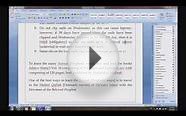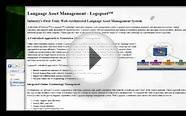
Introduction to semantics and translation
Saud Ahmad Abdullah Alshehri,
The relation between semantics and semiotics in communicating meaning
A. Introduction:
When we open our mouths to speak, a boost of air comes out as a result of the articulation parts of speech. It is surprising that an ‘acoustic blast’ can convey meaning, both simple and complex. The famous linguistics professor Roy Harris (1988) explains the importance of the study of language:
“Words are not mere vocal labels or communicational adjuncts superimposed upon an already given order of things. They are collective products of social interaction, essential instruments through which human beings constitute and articulate their world. This typically twentieth-century view of language has profoundly influenced developments throughout the whole range of human sciences.”
Consequently, the following important question arises: How does an acoustic blast acquire semantic features? The answer to this question is the focus of this paper. A similar question asks, how does a human mind decode the intended meaning of the acoustic blast? Many disciplines of cognitive science contribute to the answers to these two questions. However, here, we are concerned with linguistics. Broadly speaking, an acoustic boost transfers a message. According to the Jakobson model of linguistic communication, this message represents what the speaker is trying to convey to the listener (Jakobson, 1960). However, the famous linguist Chomsky et al (2000) raises the following concern:
“…very often, I seem to be thinking and finding it hard to articulate what I am thinking. It is a very common experience… to try to express something, to say it and to realize that is not what I meant… it is pretty hard to make sense of that experience without assuming that you think without language. You think and then you try to find a way to articulate what you think and sometimes you can’t do it at all; … if you are thinking, then presumably there’s some kind of conceptual structure there.”
To convey a linguistic message or to infer a meaning in any given linguistic message, two linguistic analytical tools are utilized: semantics and semiotics. However, first, it is important to remember that linguistics concerns language. In a broad sense, a message can take the form of a photo, music...
You might also like














